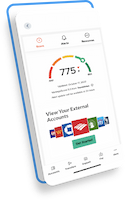You already know you’re a self-starter. You’re an entrepreneur, after all: your own boss.
But unfortunately — and contrary to popular belief — the world doesn’t always reward self sufficiency. That’s especially true in the world of the mortgage process, where the paperwork has to be just so.
Fortunately, there are home loans for self-employed borrowers available. You just need to know where to look… and how to qualify.
We’re here to help!
How may self-employed borrowers qualify for a mortgage?
Since many small businesses were impacted by covid in 2020, income from 2020 may have dipped. Even though their businesses may have recovered in 2021, conventionally, they will still use a 2-year average to qualify; meaning their qualifying income will be less, which will reduce their buying power. The great thing about the Quontic’s Community Development Loans for self-employed borrowers is that we qualify based on the income from just the last 12-months. Higher incomes can potentially equate to increased buying power.
At the end of the day, mortgage lenders really only want one thing: to loan money to qualified borrowers who can pay them back (plus interest, of course — everyone’s got to make a dime).
So when self-employed individuals apply for a loan — or when W-2 employees apply for a loan, for that matter — the lending company is really engaged in a game of risk assessment. That’s why they want all that financial information from you: they’re hedging their bets that you’re going to pay up.
For self-employed people, qualifying for a home loan can look a little different. For the most part, many of the same financial data will be in play — your credit score, your DTI (debt-to-income ratio, a measurement of how much you owe in monthly debt payments as compared to your monthly income). But you probably don’t have traditional W-2 pay stubs to offer your underwriter.
Income stability and a steady work history are both important parts of a mortgage loan application, for most lenders, so you’ll need to prove those with alternative documentation. That means that, along with the regular stuff like your credit report and bank statements, self-employed applicants may be asked to provide:
- Personal and business tax returns
- 1099s
- Profit and loss statements
- Balance sheets
- Business license(s)
- A letter from your CPA or enrolled agent
- … or other documentation, per your loan officer’s requests
Proving your self-employment income may seem like an extra hoop to jump through, and in some ways, it is. But if you’ve been successfully running your business and earning a reliable income for at least two years, you may be well on your way to homeownership (so long as you can put together the paperwork).
What should I work on while preparing to apply for a mortgage?
If you’re a new business owner, or are still working up to income stability, you may need to wait a while before you can qualify for a mortgage. In the meantime, there are other things you can do to help ensure your mortgage application will be as strong as possible.
First order of business: taking a good, hard look at your credit history and making sure it’s both accurate and favorable. Working toward good credit is personal finance 101, but when it comes to home buying, it’s critical!
For one thing, knocking out existing debt is an important part of becoming a qualified applicant. Your Debt-to-Income is one of the most heavily weighted factors lenders look at, and if it’s over a certain threshold — usually around 43% — you may be disqualified out of the gate (Use Quontic’s free DTI calculator to help you determine your debt-to-income ratio). Additionally, paying off credit cards and other loans you may have will make it easier to afford your mortgage payments on a monthly basis, as well as pushing your mortgage rates lower. That’s not to mention homeowners insurance, necessary repairs and renovations, and furniture. Owning a house can definitely be expensive!
Obviously, saving up enough money to make a down payment is also important, but keep in mind that you probably don’t need the 20% that’s thrown around as a rule of thumb. Many lending programs exist these days that offer down payments as low as 3.5%, even on conventional mortgages, not to mention government-backed options like FHA loans and VA loans. Use Quontic’s free Down Payment calculator to help you determine how much you may need for a down payment.
Additionally, if you’re using gifted funds (or any other windfall) to put toward your down payment and closing costs, be sure the money is seasoned enough for your lender. “Seasoning” simply refers to the amount of time the money has been in your account; generally, lenders want it to be at least 60-90 days old.
Where to find home loans for self-employed borrowers
Not every lender will qualify self-employed borrowers — but Quontic Bank does! Along with many other financial products and services, Quontic offers Community Development Loans (CDLs)1. These are mortgages for self employed borrowers, along with other non-traditional applicants like foreign nationals, immigrants, real estate investors, lower-income families and retirees.
Quontic Bank is one of only 3% of U.S. banks with a Community Development Financial Institution (CDFI) certification, which means helping the underbanked access the financial products and resources they need is literally our business.
Still have questions about the application process? We have answers — and we’re standing by to help you every step of the way.
Disclaimer:
1All lending products are subject to approval. Rates, program terms & conditions are subject to change without notice. Not all products are available in all states or for all amounts. This does not represent an offer to enter into a loan agreement. Other requirements, restrictions & limitations apply.
Information is accurate as of April 9, 2022 & is subject to change without notice.





